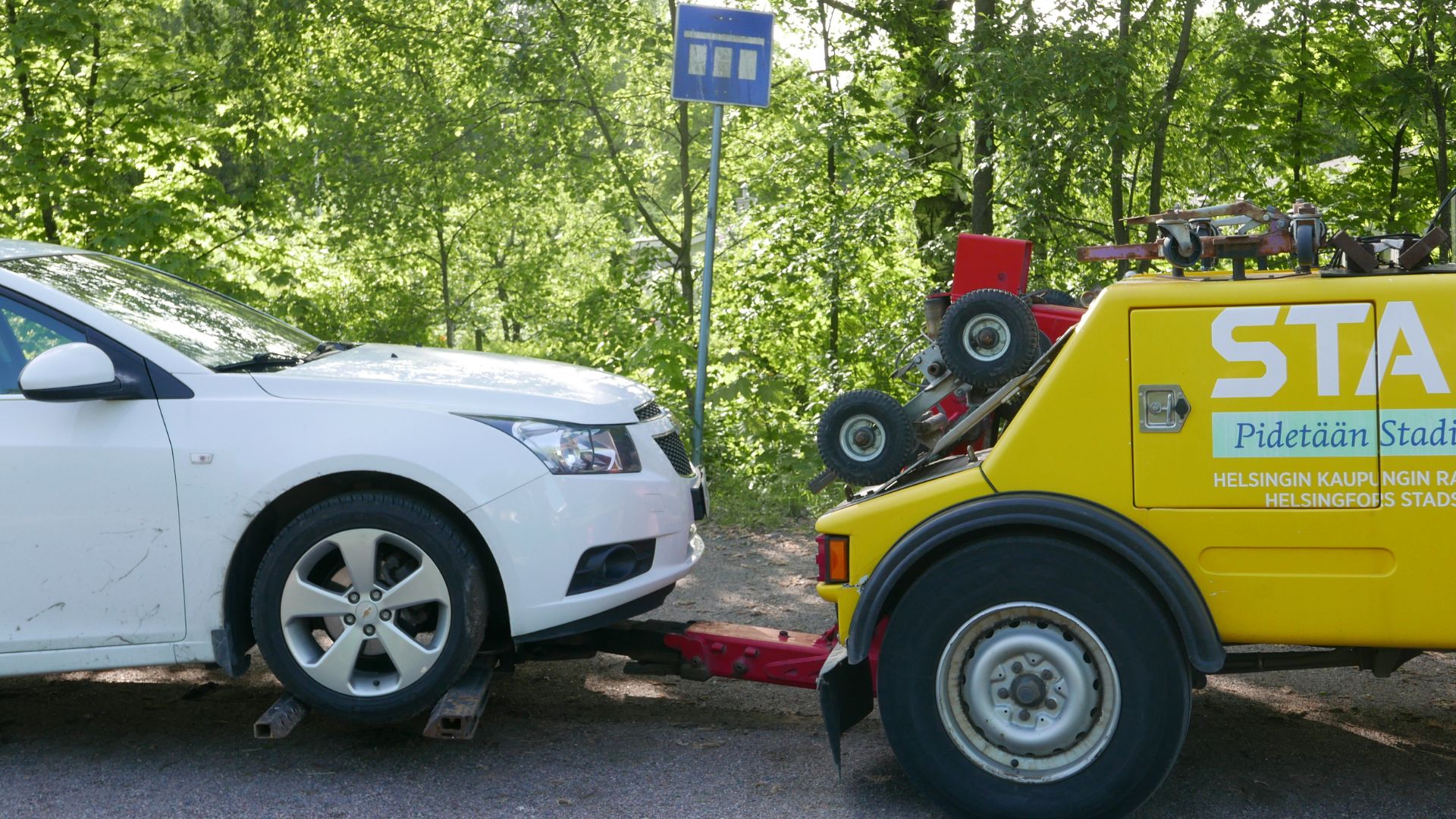
STARA
Parking Space and Geospatial Data – How Mobile Data Collection and Location Information are Utilized in Vehicle Relocations
STARA and vehicle transfers
For many motorists, street cleaning signs are a familiar sight on the streets, especially in spring. Early on a sunny June morning, we had the chance to see how geospatial and mobile data collection are being used in vehicle transfers.
At the transfer site, we meet the City of Helsinki’s Stara transfer supervisor, Mika Koskenvierus, Foreman, Janne Mäkelä, and transfer truck driver, Mikael Eden. They have come to check the situation of the parking area reserved for the construction of the Raide-Jokeri in case any vehicles need to be moved.
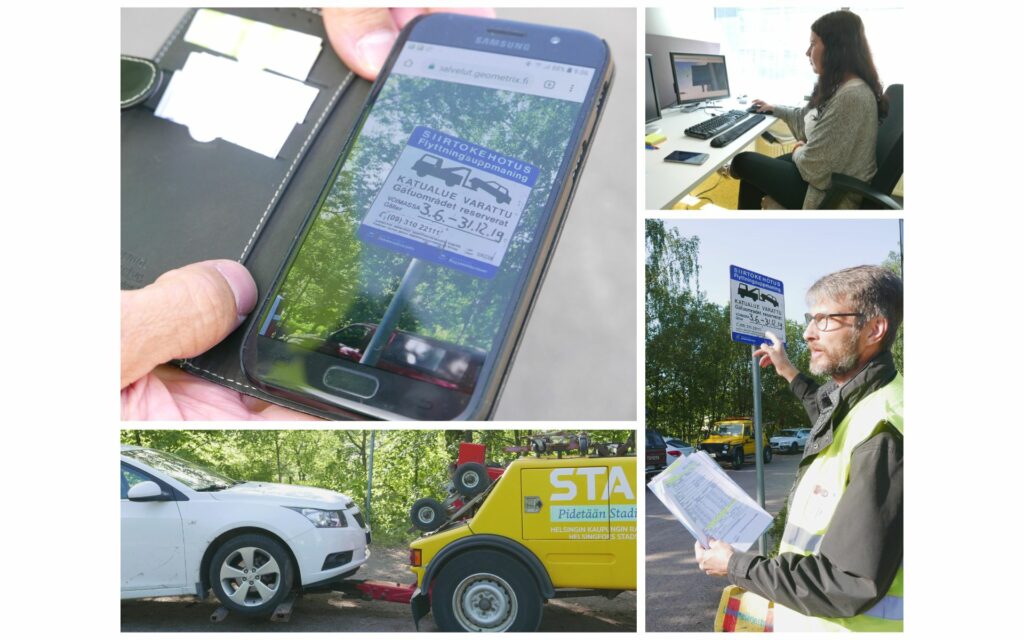
The transfer of vehicles is a multi-stage process. Before the tow truck arrives, many steps have already taken place, which Koskenvierus explains in more detail. Statutory transfer notices of an impending transfer must be displayed at least 48 hours before the transfer notice takes effect. Vehicles in the area are then mapped and recorded to determine whether drivers may have seen the signs when parking their vehicles.
Despite the warning signs, vehicles are often found in the transfer area on the day the transfer takes effect, as was the case on the day of our visit. What seems almost like detective work begins: you have to find out whether the vehicles to be transferred have moved since the signs were put up, as this affects who pays for the transfer.
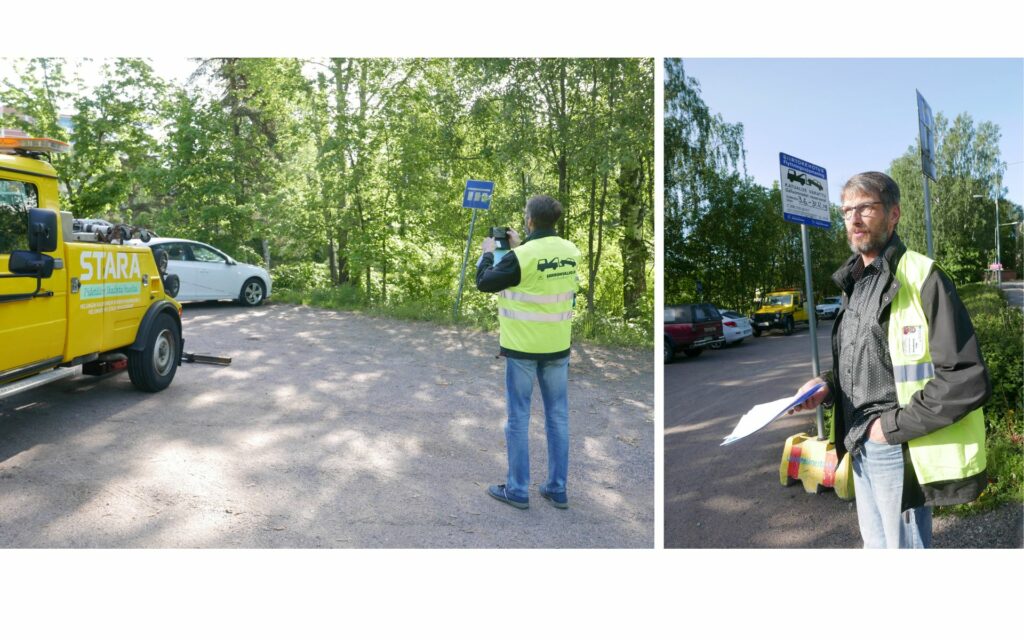
The cars on site are compared with the vehicle data from a previously compiled erection record. Drivers of vehicles parked before the signs were erected were not aware of the reservation and, therefore, cannot be obliged to pay for the removal of their vehicle. Therefore, when the signs were erected, the cars present were recorded and their registration and location details. If necessary, the position of the tyre valves can be used to check whether the cars have moved. The transfer operation is scheduled to start at 7.30 am, so it’s time to get to work before the site crew arrives. Depending on the situation, an attempt can be made to reach the driver of the vehicle a few minutes before the transfer, thus avoiding the inconvenience for both the vehicle owner and in terms of the transfer work.
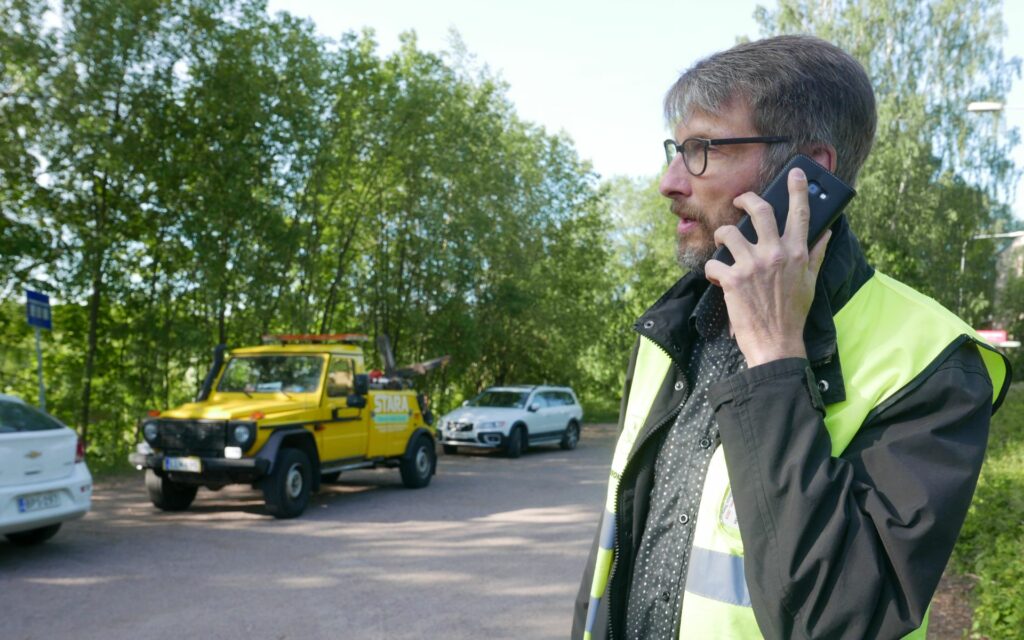
We tried to reach the taxi owner parked on site by phone. The registration number gives us the contact details and allows us to reach the driver. Within minutes, the driver, who had worked a long evening shift, arrived to move his vehicle to another parking space to wait for the day’s later drives.
This avoided the transfer fee and allowed workers on the site to start their own work more quickly, for which the transfer incentive had been set up.
Pictured above and right: Mika Koskenvierus
Instead, the white car will have to wait for its next start at a new location. Eden, the driver of the tow truck, familiarly attaches the car for towing. The modern technology of today’s cars makes it sometimes challenging to move the cars, but so far, no vehicle has been left unmoved for lack of means, although creative solutions have sometimes been tried.
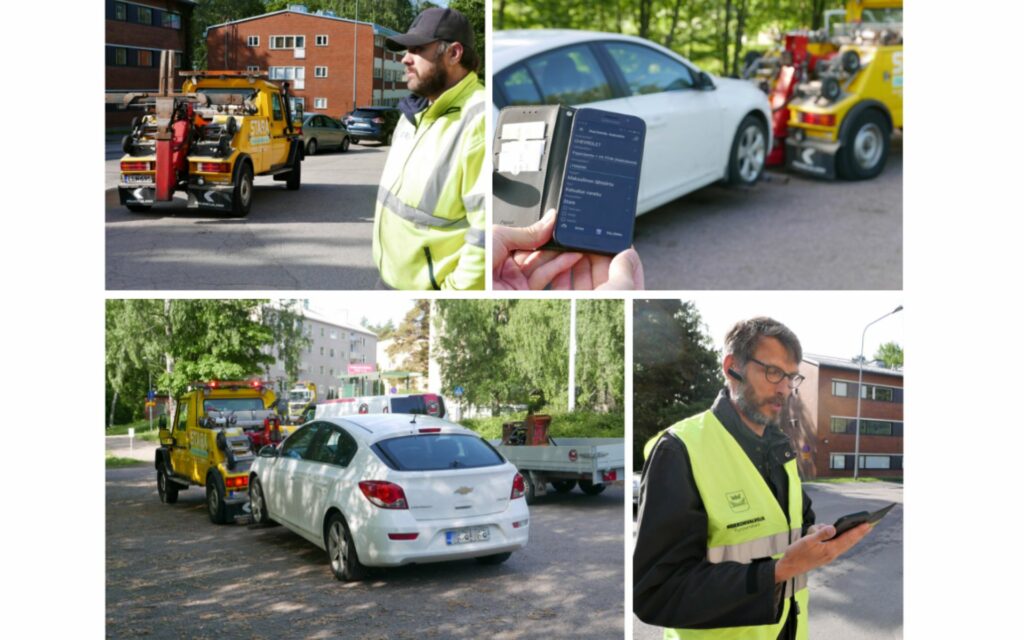
The car is moved smoothly a few blocks away, and Koskenvierus records the transfer in the location-based app Mobilenote and leaves a notification on the car’s windscreen. Owners no longer have to search for their car in the neighbourhood but can find out where it is by text message.
Top left: the driver of the transfer vehicle, Mikael Eden; top right: the details of the vehicle to be transferred have been stored in Mobilenote, and the vehicle was photographed before the transfer started. Bottom left: the vehicle is ready to be moved to a nearby area; bottom right: Mika Koskenvierus logs the transfer in Mobilenote as completed.

At this stage, a large amount of information has already been collected and processed. Janne Mäkelä says that before Mobilenote was introduced, data collection on car transfers was done on paper. However, the transfer is a team effort, where information is recorded at the transfer site and shared between different sites, as well as between the site and the office.
In the picture is Foreman Janne Mäkelä
“Since moving to electronic and mobile data collection, the sharing of information has become more efficient and has created an up-to-date view of the progress of the work, which has been a significant benefit of the change.” , says Mäkelä.
At the office
We move on to monitor the process on the office side. Pauliina Sundqvist, Preparer at the City of Helsinki’s Parking Control and Parking Services Unit, meets us in Vallila. The computer screen displays data collected in the field on vehicle transfers. At the office, the data is processed further, and in the case of a reimbursable transfer, the car owner is informed ofthe transfer and sent an invoice. The electronic tools have made the service faster and more real-time, which has both facilitated the work of the employees and improved the flow of information between the vehicle owner and the city,” says Sundqvist.
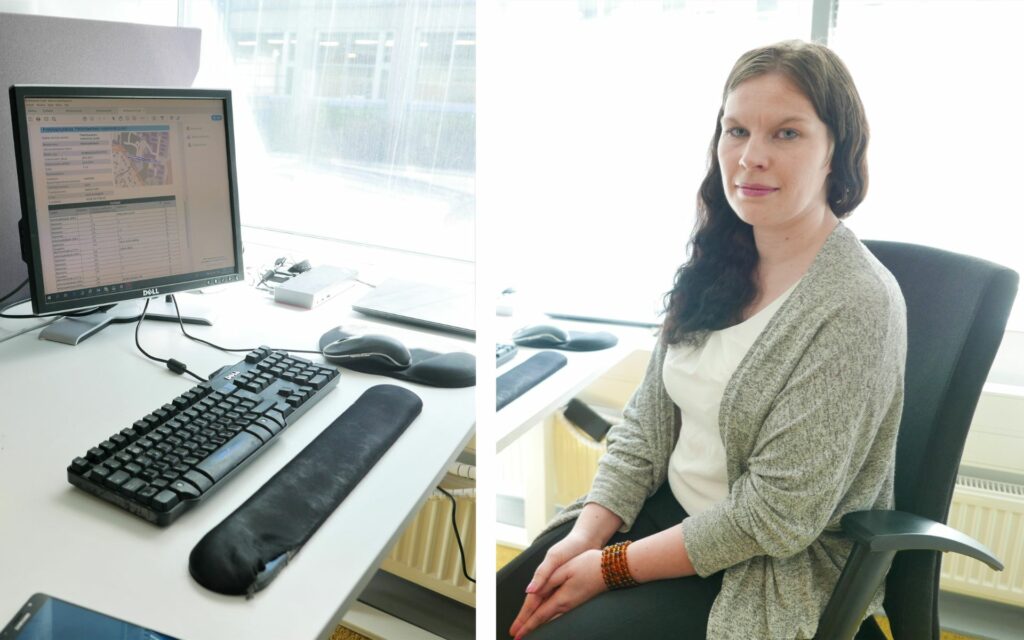
In Helsinki alone, 15,000 to 20,000 car transfers are carried out each year in connection with maintenance work, and various events employ around 2,000 transfers, which gives an idea of the amount of data processed.
The electronic system has enabled the use of new tools and brought efficiency to the work compared to the paperwork of the past. The current practice of on-street parking photography makes it easier to verify who is responsible for the cost of a car transfer: the owner or holder of the car or the person who ordered the transfer.
In the photo Pauliina Sundqvist
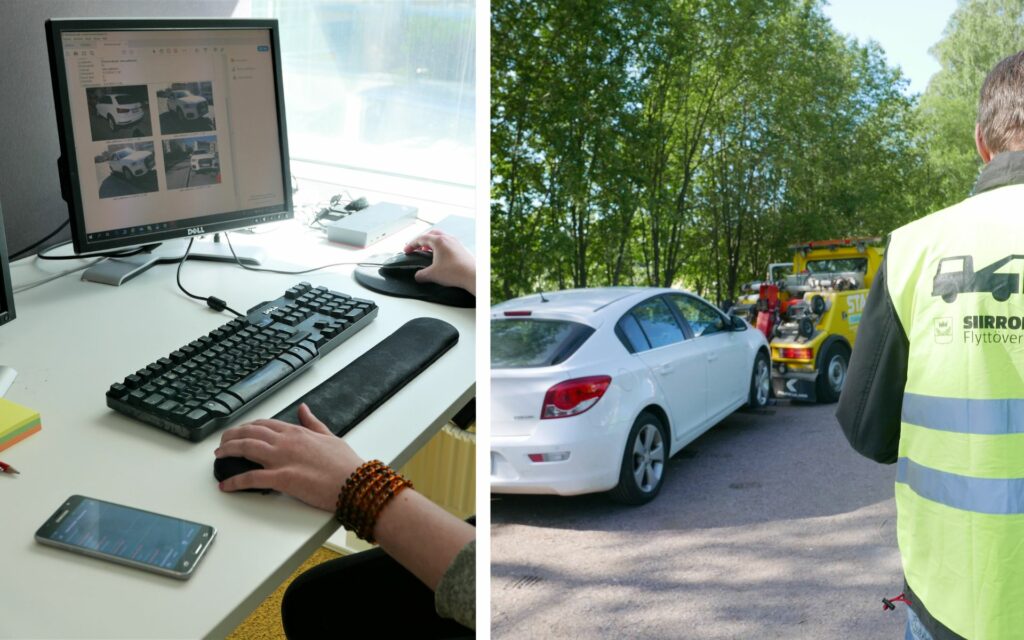
In addition, the photographic evidence has helped in making decisions on compensation for any damage to the car during the transfer and has reduced the number of claims for rectification by allowing the customer to see the status of the case at the time of the incident.
Sundqvist mentions that the photographs and attachments have also been useful in cases where the case has had to be settled, for example, in an administrative court.
It has been interesting to learn about the physical transfer of vehicles and the underlying data management of the process. The high number of car transfers in Helsinki each year was quite surprising. However, the seamless cooperation and positive attitude of the employees we met, which came across from the teamwork we saw during the day, both in the field and in the office, are certainly key success factors in the success of this project.
Many thanks for the opportunity to follow your work, Mika Koskenvierus, Janne Mäkelä, Mikael Eden and Pauliina Sundqvist.
More customer stories
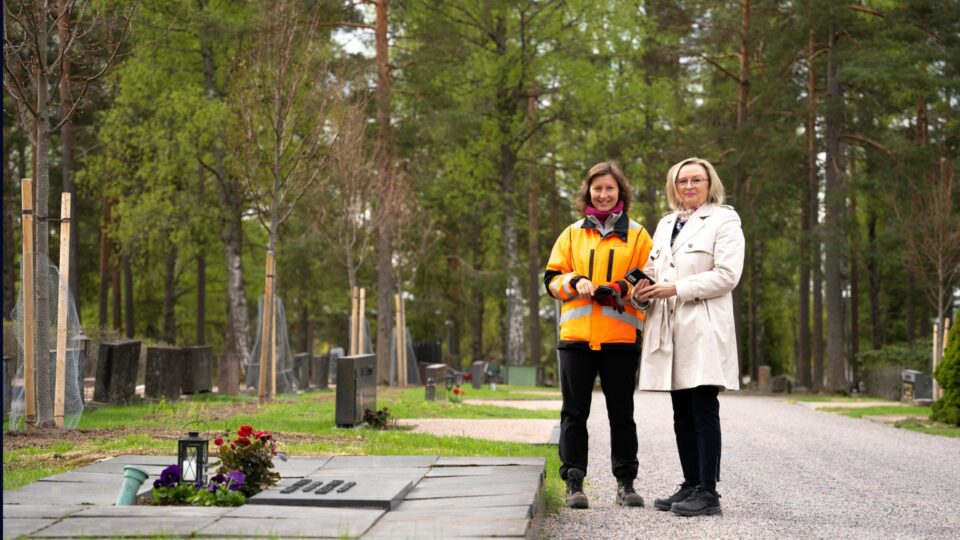
Tuusula parish
With Geometrix’s grave map program, we can easily locate grave sites in the field with employees. Additionally, if we encounter a…
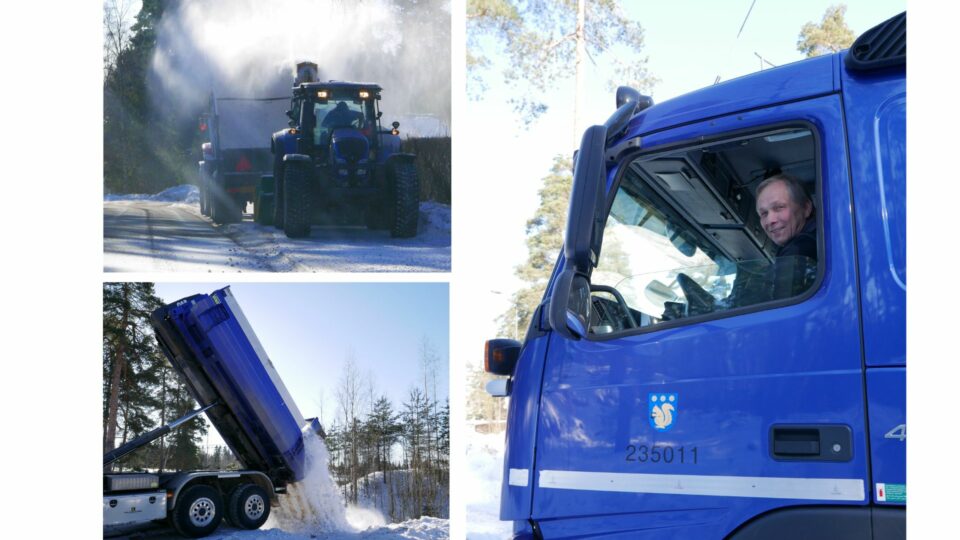
City of Kauniainen
Kauniainen takes pride in its reputation as a villa and garden city, requiring extensive maintenance work to maintain. Digitalization and geospatial…